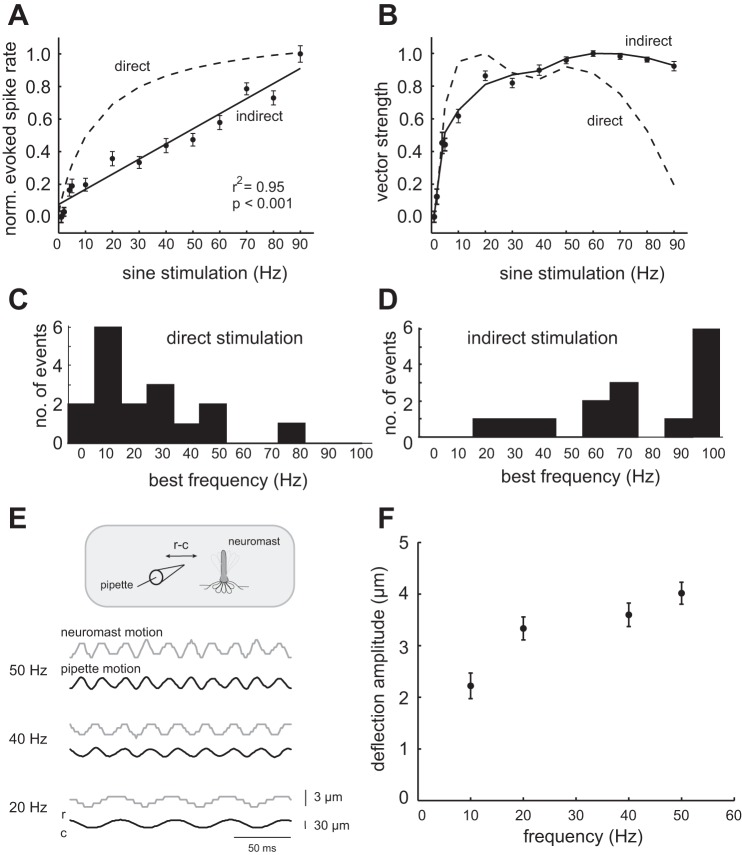Fig. 10.
Comparing the effect of direct stimulation to indirect stimulation on the neuromast. A: indirect neuromast stimulation, in which a sinusoidal motion must be transmitted through the fluid medium before influencing the neuromast, results in a lower evoked spike rate (solid line) compared with direct mechanical stimulation of the neuromast (dashed line). B: vector strength differs during indirect (solid line) vs. direct (dashed line) stimulation. C: when neuromasts are directly stimulated, most afferent neurons exhibited low best frequencies. D: when neuromasts are indirectly stimulated, the same cells shifted to higher best frequencies. E: simultaneous tracking of the stimulation pipette and hair cell bundle of a single neuromast, showing the displacement of hair cell bundle (gray trace) in response to the rostrocaudal (r-c) displacement of the stimulation pipette (black trace) at three frequencies. F: the deflection amplitude of the hair cell bundle increases with stimulation frequency (P < 0.05, Wilcoxon rank-sum test).

